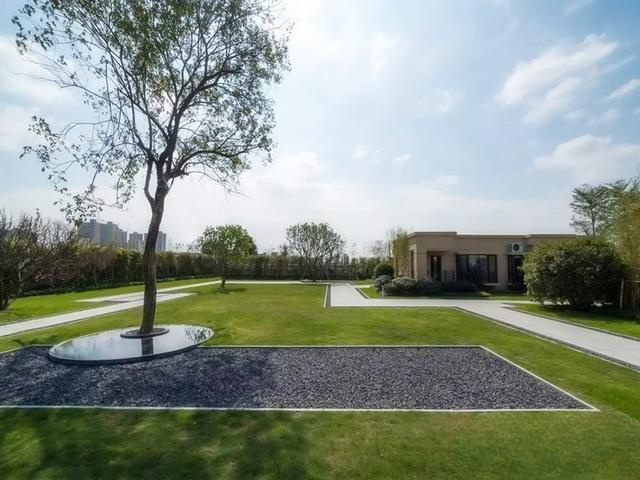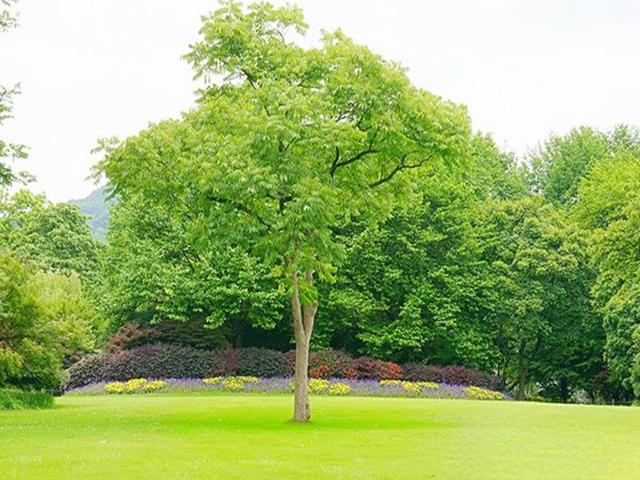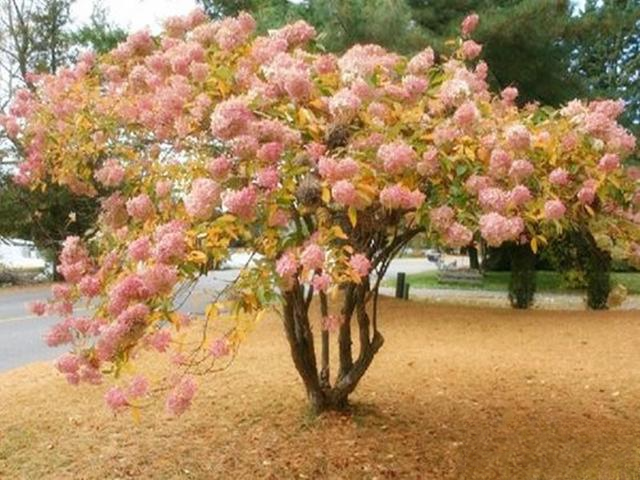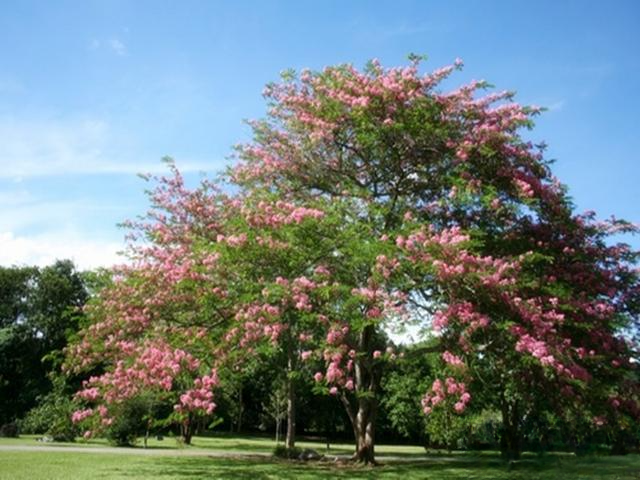A single tree can create a beautiful scene. Solitary tree species can have a great impact.
In landscaping projects, we often see a tree planted alone in one place, such as on a lawn, in a green island, or on a hillside. These tree species are solitary tree species.

As an important green tree species, solitary tree species can achieve the effect of a single tree forming a landscape. It is indeed not easy for a single tree to take up the responsibility of greening, so solitary tree species generally have higher requirements in terms of tree shape, height, quality, and form.
Solitary trees have become a unique landscape in gardening. So, what is the specific role of solitary trees in gardening? And what are the common tree species that can be planted as solitary trees? Let's take a look.
The role of solitary tree species
1. As the main landscape planting, it forms the landscape artistic conception. The appearance of solitary trees is generally very beautiful, either standing tall and proud, or graceful, or luxuriant branches and leaves. In addition, their size is usually large, so they are often planted as the main trunk tree species in garden oases. They play a leading role in the landscape composition. Often when we appreciate a landscape, we will be attracted by solitary trees first.

2. Solitary trees have strong shading ability. As mentioned above, solitary trees are generally large in size, with lush crowns, tall and graceful tree shapes, and luxuriant branches and leaves. Therefore, solitary trees planted in oases not only have high ornamental value, but also have strong shading effect, such as sycamore, sycamore, Canadian poplar, camphor, elm, Koelreuteria paniculata, etc. In the hot summer, their open crowns provide an excellent place for everyone to shade and cool down.
When planting solitary trees in green landscaping, they need to be planted in a conspicuous position. Try not to plant other plants around the solitary tree species to ensure the prominent position of the solitary tree species.
Common solitary tree species
Common solitary trees in the north include:
1. Arbors: Ginkgo, for viewing leaves and fruits, Sophora japonica, for viewing trunks, Xinjiang poplar, Populus tomentosa, Acer truncatum, for viewing leaves in autumn, Acer truncatum, for viewing leaves in autumn, Acer palmatum, for viewing leaves in autumn; White Eleutherodactyla, Cedrus, Gleditsia sinensis, Sophora japonica, for viewing trunks in autumn and winter; Robinia pseudoacacia, Salix matsudana, Salix tataricus, White birch, Walnut, Phellodendron chinense, Eucommia ulmoides, Tilia mongolica, Tilia amurensis, Ailanthus altissima, Koelreuteria paniculata, for viewing flowers; Torchwood, for viewing fruits, Fraxinus chinensis, Ash, Ash, Red-leafed Plum, etc.

2. Small shrubs: Small shrubs are generally used for viewing flowers, such as Prunus armeniaca, Spiraea syringae, Rosa rugosa, Forsythia suspensa, etc. There are also those used for viewing leaves, such as Berberis thunbergii.
Common solitary trees in the south include:
1. Trees: cedar, camphor, magnolia, Elaeocarpus, osmanthus, banyan, Michelia lechangensis, purple nanmu, Washington palm, masson pine, hackberry, beech, weeping willow, liquidambar, magnolia, red leaf plum, crape myrtle, albizzia, bauhinia, Koelreuteria paniculata, tulip tree, etc.
2. Small shrubs: Ligustrum lucidum, broad-leaved Mahonia, Camellia sasanqua, Serissa chinensis, Floribunda rose, Jasmine Yunnanensis, Hibiscus sinensis, Nandina domestica, Gardenia jasminoides, Hypericum, etc.

The pictures in the article are from the Internet and the copyright belongs to the original author. If there is any infringement, please contact the author to delete them.